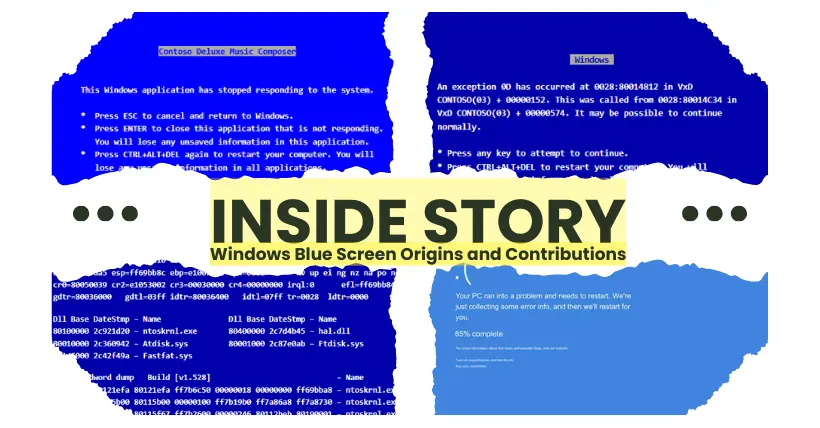The recent large-scale Windows blue screen has once again drawn attention to this particular interface. Various accounts exist regarding the origin of the Windows blue screen, with three names frequently mentioned: former Microsoft CEO Steve Ballmer, senior developer Raymond Chen, and John Vert.
Raymond Chen specifically wrote in an official blog post explaining what the Windows blue screen really represents. He confirmed that there are actually three styles of Windows blue screens, each attributed to different authors, corresponding precisely to these three names.
The first type is the blue screen under Windows 3.1, which appears when a program becomes unresponsive and can also be manually triggered by pressing Ctrl+Alt+Del. Nowadays, this key combination brings up options for lock, logoff, switch user, or task manager, against a blue background.
This blue screen interface does not indicate a system crash; you can press ESC to return at any time, press ENTER to close the unresponsive program, or press Ctrl+Alt+Del again to restart the system. Raymond Chen jokingly refers to this as an “unhappy blue screen.” The prompt messages on this blue screen were personally written by Ballmer, although the designer of this functionality is unknown.
In fact, Windows 3.1 did not truly have a “blue screen of death”; during system crashes, a black screen with a command prompt interface would appear.
The second type is the blue screen under Windows 95, triggered by kernel errors. However, it also does not represent a true “blue screen of death”; pressing any key allows you to return, and there is a chance the system will continue to function normally. Raymond Chen refined both the functionality and interface, resulting in its final appearance, though he emphasizes he cannot be called its author.
The third type is the blue screen under Windows NT, authored by John Vert, which truly signifies a system crash beyond recovery, necessitating a restart. It served as the basis for subsequent variations of the blue screen of death, though the presentation changed, the essence remained largely the same.
Related:
- Troubleshoot Nvidia Causing Another Computer Blue Screen
- Why Skip Internet Setup on a New Laptop? Explained

Disclaimer:
- This channel does not make any representations or warranties regarding the availability, accuracy, timeliness, effectiveness, or completeness of any information posted. It hereby disclaims any liability or consequences arising from the use of the information.
- This channel is non-commercial and non-profit. The re-posted content does not signify endorsement of its views or responsibility for its authenticity. It does not intend to constitute any other guidance. This channel is not liable for any inaccuracies or errors in the re-posted or published information, directly or indirectly.
- Some data, materials, text, images, etc., used in this channel are sourced from the internet, and all reposts are duly credited to their sources. If you discover any work that infringes on your intellectual property rights or personal legal interests, please contact us, and we will promptly modify or remove it.



